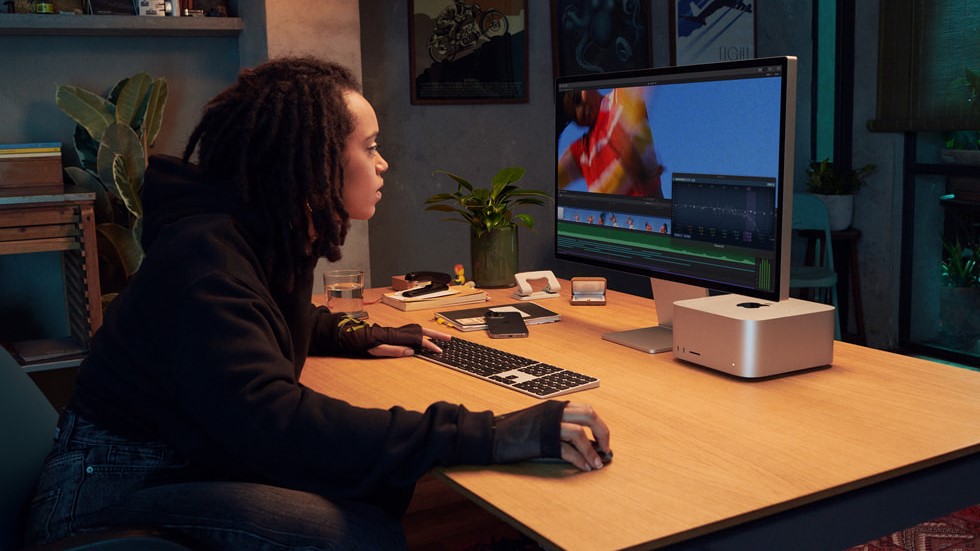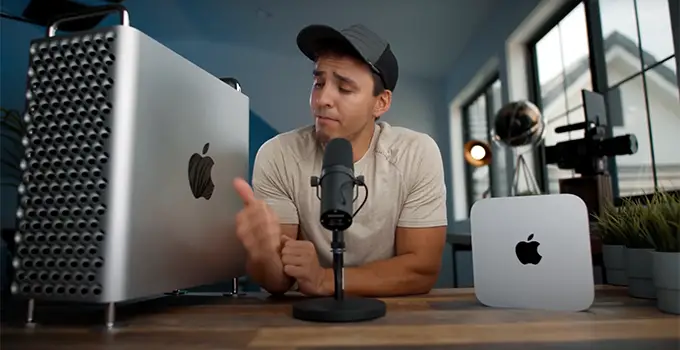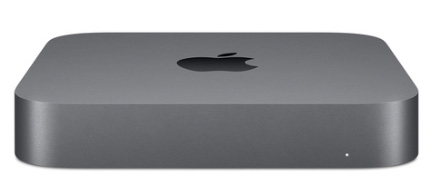

- #Using mac mini for video editing install#
- #Using mac mini for video editing full#
- #Using mac mini for video editing software#
Although that may only be the installer and not the component needed for REDCODE media itself. For example, RED’s Apple workflow installation requires Rosetta2.

#Using mac mini for video editing install#
The first time you install a non-native application, Big Sur goes online, downloads and installs Rosetta2, becomes it doesn’t already come in the OS. Any non-native application runs under Rosetta2 emulation. To get the most out of the M1 chip, you need native applications that have been compiled for both Big Sur and the Apple silicon architecture.
#Using mac mini for video editing software#
The caveat is that this type of performance becomes evident with optimized software and media. This ML processing is significantly faster on the M1 mini than my older MacBook Pro. One example is Pixelmator Pro’s Super Resolution algorithm to resample images during enlargement, which is accelerated by the Neural Engine. Modern software is increasingly adding machine learning features, so the Neural Engine takes that load off of the CPU and GPU. The 16-core Neural Engine should not be ignored, because it handles machine learning functions. I’m no expert on the engineering design, so take that assessment with a grain of salt however, based on my experience with the M1, it certainly feels close to being true. If that’s true, then 8GB and 16GB would equate to 16GB and 32GB on an Intel-based Mac. Some have suggested that RAM on the M1 chip compares with double that amount due to efficiency. I presume that’s either an error or the way the CPU operates is different enough from the x86 architecture to make it a meaningless parameter.Īpple gains a lot of efficiency from the SoC design, so 8GB of unified RAM outperforms RAM on a conventional computer. I have seen it written that this is a 3.2GHz chip, yet one of the benchmarks I used identified it as 2.4GHz. To compare purely based on numbers is misleading, which is why Apple has been silent about CPU clock speeds. It definitely outperforms its class and rivals “more powerful” and more expensive units. To call it the Bruce Lee of computers is no hyperbole. The M1 Mac mini is one of the best-performing small computers in this size or price range. I was also interested to see whether more RAM or a beefier GPU would make that much of a difference. So comparing “like” products doesn’t really seem valid either. Last year I tested the decked out Intel Mac mini and the M1 blows it out of the water. Of course, this is a base model M1 Mac mini and I’m comparing it against an iMac that costs five times as much, which might seem a bit unfair. I was curious whether or not these tests would validate that choice. The test comparisons that follow in this article are relative to that machine. I just bought a 2020 8-core 27” iMac and had weighed that decision against an M1 Mac mini purchase. If you were buying a system for general computing use, then it would be hard to go wrong with these. The LG display comes the closest to the iMac Retina display of any of the third-party monitors that I’ve looked at. The M1 Mac mini with this LG 24” display form a very nice combo. The LG display I was using connected on one of the Thunderbolt ports and includes a Thunderbolt loop-through along with additional USB-C ports.
#Using mac mini for video editing full#
The Mac mini can support a Pro Display XDR at full 6K resolution, plus an additional 4K display over HDMI.

The Mac mini comes configured with two Thunderbolt 3/USB-C/USB 4.0 ports, two USB-A ports, HDMI, ethernet, Bluetooth, and Wi-Fi 6. At first I was a bit concerned about the mini having only 8GB of RAM and a 256GB SSD, but that really wasn’t much of an issue. These items are each $699 USD from the online Apple Store. My review unit included the base model M1-equipped Mac mini coupled with the LG UltraFine 4K 24” Display. The M1 is already based on a chip architecture with an established track record. While this may appear a first-generation product, it in fact builds upon Apple’s years of hardware design, development, and implementation in iPhones and iPads.

Initial versions of the M1 are offered with 8GB or 16GB of unified RAM. The Neural Engine is a separate 16-core unit within the chip that’s optimized for machine learning tasks. It also includes an 8-core integrated GPU. The M1 uses an 8-core CPU divided into four high-performance and four high-efficiency cores designed to balance performance, power demand, and heat load. The MacBook Air, the 13” MacBook Pro, and the Mac mini are the first Macs to feature the new chip.Īpple’s M1 processor is an integrated SoC (system on chip) design, which combines CPU, GPU, Neural Engine, cache, and RAM into a single integrated component. Rounding out 2020, Apple made the first move in its transition from Intel to Arm-based Apple silicon processors.


 0 kommentar(er)
0 kommentar(er)
